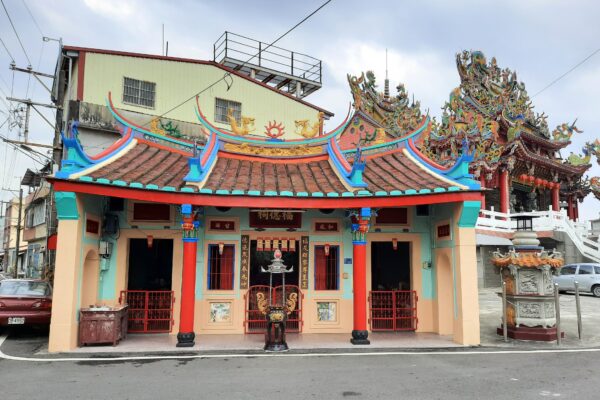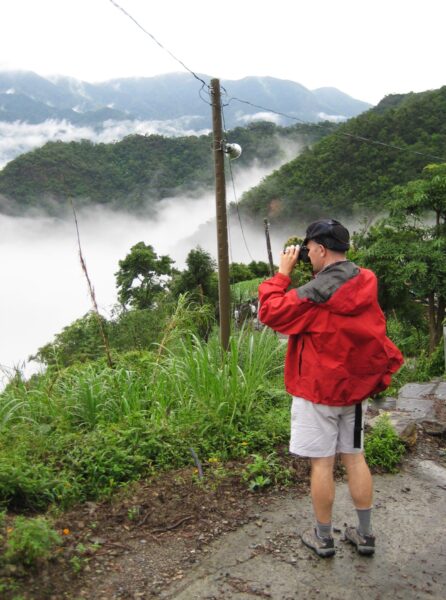Pingtung County
Taiwan’s southernmost county, Pingtung offers an attractive blend of beaches, bucolic villages, and lofty mountains. Covering 2,776 km2 (1,072 square miles) but with just 792,000 inhabitants, the county offers plenty of space to roam, not to mention a climate that’s almost always delightful between October and March. It’s no surprise that cyclists are among those who adore this end of the island.
 In addition to villages which are strongholds of Hakka culture and the exciting beach resort of Kenting, Pingtung County includes the easy-to-reach island getaway Little Liuqiu and a slew of indigenous settlements, among them the handicrafts centre of Sandimen and remote but stunning Wutai.
In addition to villages which are strongholds of Hakka culture and the exciting beach resort of Kenting, Pingtung County includes the easy-to-reach island getaway Little Liuqiu and a slew of indigenous settlements, among them the handicrafts centre of Sandimen and remote but stunning Wutai.
Little Liuqiu (Xiaoliuqiu)
Near enough to Kaohsiung for a day trip, but with none of the bustle and congestion that characterises Taiwan’s harbour city, Little Liuqiu (often called Xiaoliuqiu or Siao Liouciu) is a delightful getaway that’s especially appealing to snorkellers, ecotourists, and those in search of a romantic sunset. Swimming with green turtles is a popular activity; just be careful not to touch any of these graceful creatures, as they’re a protected species.
In geological terms, the island is essentially a coral reef lifted above the ways by tectonic action. There’s little soil and, save for the occasional pigsty and the odd vegetable patch, no farming. For generations, the people here subsisted on what they could gather from the ocean. It’s said the surrounding waters contain at least 300 species of fish. Wind and wave erosion has left some curious rock and coral formations. Best known is The Vase, a mushroom of ancient coral much taller than a man. Another is Guanyin Rock, so called because of its similarity to the Buddhist goddess of mercy.
Even if you find the backstory at Black Ghost Cave a bit creepy, the stunning views here of the sea and the cliffs will win you over. Nearly 400 years ago in this cave, mercenaries in the pay of the Dutch East India Company surrounded and massacred hundreds of the island’s indigenous inhabitants, the Lamey people, after the natives had slaughtered the crews of two shipwrecked Dutch vessels. Even now, local people burn incense at this spot to calm the spirits of those who died. If you visit Little Liuqiu, you won’t need anything to calm you – midweek it’s exquisitely tranquil just as it is.
Indigenous communities
One in twelve of Pingtung’s residents is of Austronesian descent, and the greatest concentration of indigenous villages can be found in the county’s hilly northeast.
Sandimen, a mini-town of narrow streets perched on a hillside, is one of the Paiwan tribe’s most important settlements. Many of the residents work as farmers, and quite a few commute to jobs on the lowlands. However, a good portion of the 7,700 people who live here now make a living by art and handicrafts; it’s thus a great place to hunt for souvenirs. Two major studios produce exquisite glass-bead works such as necklaces and pendants; each colour scheme and pattern has a certain meaning in Paiwan culture. There are also leather workers and dressmakers who make and sell indigenous tunics and skirts.
If you head deeper into the mountains, you’ll enter Wutai, a gorgeous rural township dominated by the Rukai people. The main village (also called Wutai) is perhaps the most attractive indigenous settlement in Taiwan, thanks to the gray slate used to face and roof many of the homes. The Presbyterian church here is one of Taiwan’s most striking Christian houses of worship. Access to Wutai is by a single road, this isolation being a major reason why the inhabitants have been able to preserve much of their Rukai culture. Whether you stay overnight or just spend a few hours here, you’re sure to leave with very fond memories.
